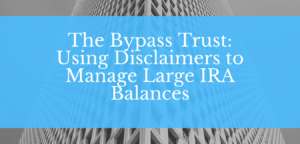How to Save Money on Your Social Security Taxes

Most people look forward to the day when they start to receive the rewards for putting all their hard-earned money over the years into social security. However, some people end up with a lot less than they had planned on because they end up paying more taxes on those benefits than they had expected. So what can you do to help lower the tax bill on your Social Security benefits?
For starters you need to know what tax table you fall into. It all depends on how much provisional income you make, which is determined by adding your adjusted gross income, your nontaxable interest and half of your Social Security benefits. If you earn less than $25,000 as a single or $32,000 for a joint return then you won’t have to pay taxes on your SS benefits.
However, as much as 50 percent of your benefits could be taxable if your provisional income is between $25,000 and $34,000 for singles and $32,000 and $44,000 for joint filers. If you surpass those figures as much as 85 percent of your benefits could be taxed.
So in order to avoid these taxes you have a few options. You can give as much as $100,000 tax free a year to charity from an IRA if you are 70.5 years or older. You can also put as much as $125,000 into a Qualified longevity Annuity Contract (QLAC). This amount does not count against you when your required minimum distribution is calculated.
Another move you can make is to withdraw money from a tax-free Roth IRA or you can roll money over from a traditional IRA to a Roth many years before you start collecting SS benefits, which will help you reduce taxes in retirement. Of course, for high net worth individuals it might be very difficult to get below the 85 percent threshold, which is why it’s important to have an overall tax-efficiency plan instead of simply focusing on saving on Social Security taxes.
http://www.kiplinger.com/article/retirement/T051-C001-S003-how-to-limit-taxes-on-social-security-benefits.html
Land Management: Conservation Easements
Land Management: Conservation Easements Real property–land and the home or other structures on it–often has special significance to the family that owns it, to the surrounding community or to the ecology of the area. It may have played a role in an historical event; provide habitat for wildlife; command a magnificent view; or offer access…
Personal Finance 101
Personal Finance 101 The subject of personal finance is very broad, but as a beginning, I would like to discuss what I consider the foundations of personal finance: Security, Stability, Growth and Protection & Management. Security Security to me means that I am prepared for the “hit by a bus” scenario. I have life insurance…
Saving for Retirement: 5 Steps to Building Significant Wealth
Saving for Retirement: 5 Steps to Building Significant Wealth Are you saving enough money for retirement? Do you know how much money you need to accumulate in order to retire? Are you concerned about how you should be saving for retirement? The simplicity of these questions can lead many people to believe that there is…
The Bypass Trust: Using Disclaimers to Manage Large IRA Balances
The Bypass IRA Trust: Using Disclaimers to Manage Large IRA Balances By Mary Kay Foss California CPA, December 2001Trying to fund a bypass trust can be problematic if clients only have a residence and a large retirement plan as their major assets. On the surface, a residence isn’t a good asset for a bypass trust…



